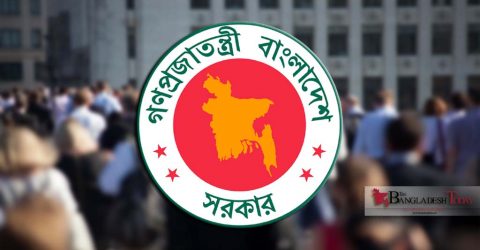
DHAKA, – Bangladesh has made notable progress in a good number of indicators under the Sustainable Development Goals (SDGs).
The indicators include reducing the number of people living below the upper and lower poverty lines, lowering the percentage of undernourished population and stunted children, reducing maternal mortality ratio, increasing adult literacy rate, and increasing access to safely managed drinking water and improved sanitation facilities.
These were revealed formally at the launching of the Sustainable Development Goals Bangladesh Progress Report 2020 held at the NEC Conference Room in the city’s Sher-e-Bangla Nagar area.
This was the 2nd SDGs progress report after the first one was launched in 2018.
Planning Minister MA Mannan spoke at the progress report launching ceremony as the chief guest while Principal Coordinator on SDG Affairs at the Prime Minister’s Office Zuena Aziz, Senior Secretary of the Planning Division Md Asadul Islam, Foreign Secretary Masud Bin Momen and UNDP Resident Representative Sudipto Mukerjee spoke on the occasion as special guests. The function was chaired by General Economics Division (GED) member of the Planning Commission Dr Shamsul Alam.
In his power-point presentation, Dr Shamsul Alam said that on SDG 1 to end poverty, the proportion of population living below the national upper poverty line has declined to 20.5 percent in 2019 down from 24.3 percent in 2016 while the population below the lower poverty line has also declined to 10.5 percent.
He showed that on SDG 2 to end hunger, Bangladesh has made remarkable progress in reducing the percentage of stunted children under-5 years by almost half from 60 percent in 1996-97 to 28 percent in 2019.
On SDG 3 which is healthy lives and well-being, the maternal mortality ratio has persistently dropped and the number of births attended by skilled health personnel has remarkably improved. A continuous decrease has been observed in U5MR during 1995-2019 from 128 to 28. The nation is in line in achieving the 2020 milestone for U5MR.
Besides, the incidence of malaria has dropped down to 1.6 per 1,000 population in 2019 from 4.3 in 2015. Adolescent birth rate per 1,000 women in 15-19 age group has significantly declined from 144 in 1999 to 83 in 2019.
On SDG 4 for inclusive and equitable quality education, the adult literacy rate has increased significantly from around 53.5 percent in 2005 to 73.9 percent in 2018.
The progress report showed that Bangladesh has stayed ahead of its South Asian neighbors for the 5th time consecutively, indicating significantly better performance in promoting women empowerment.
On SDG 6 for ensuring clean water and sanitation, the report indicates that in 2019, the proportion of population using safely managed drinking water services stood at 47.9 percent at the national level and 98.5 percent of household members using improved sources of drinking water.
In 2019, 84.6 percent of household members using improved sanitation facilities and 74.8 percent households reported practicing a hand-washing facility with soap and water resources.
According to recent data, the report said more than 92 percent of people have access to electricity and the proportion of population with access to clean fuels and technology increased to 19 percent in 2019 from 7.24 percent in 2000.
The report highlighted that Bangladesh’s upward shift in the average annual growth rate of real GDP per capita to 6.91 percent in FY2018-19 from 5.1 percent in the baseline FY2014-15 is noteworthy. However, there are significant uncertainties over the growth prospects due to the recent outbreak of Novel Coronavirus (COVID-19) pandemic.
It said higher unemployment rate of women, persons aged 15-29 years, informality in job market, skills demand and supply mismatch, child labour and problems involving migration of workers need to be tackled.
On SDG 10 for reducing inequalities, the report said income inequality is much higher than consumption inequality and income inequality has increased while consumption inequality has remained relatively stable over time.
Official development assistance and foreign direct investment shows an increasing trend. In 2018, Bangladesh received $6,369 million as ODA as well as received $4,946 million as FDI.
The report also said achieving the SDGs will critically depend on the availability of resources including external resources. International community will have to extend their adequate and timely support to Bangladesh in trade and private sector development, identifying and removing barriers to investment, preventing tax avoidance and evasion.




